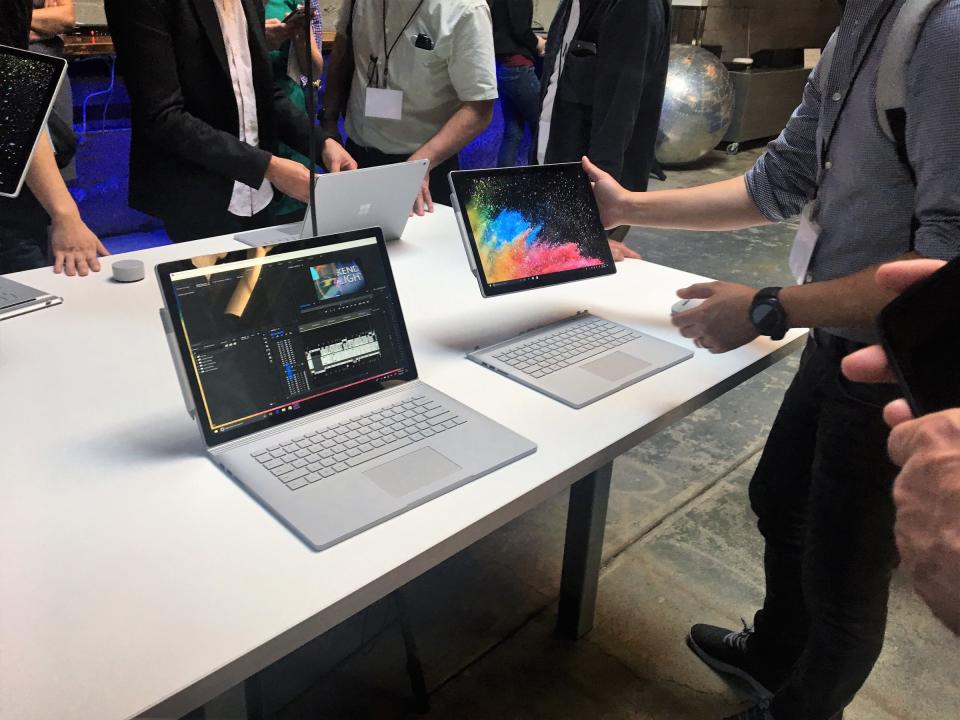Microsoft has had Apple's new face-scanning feature for years, and it works great (MSFT, AAPL)

Apple
Some people are worried about how well FaceID, a key feature of the iPhone X will work.
But facial recognition, the technology underlying FaceID, isn't new.
Windows Hello, Microsoft's facial recognition system that's similar to FaceID, has been around for years and works well.
There's a lot of angst right now over FaceID, Apple's new facial recognition system that's a core feature of the upcoming iPhone X.
Besides the obvious privacy concerns, some people are worried that FaceID won't be fast enough or reliable.
I think those fears are overblown.
Microsoft has offered a similar feature since 2015, and it works great! I can't guarantee FaceID will work just as well when Apple releases its new $999 phone next month, but Microsoft's success offers a good sign.
Microsoft's face recognition feature, which debuted on the Surface Pro 4, is called Windows Hello. Like FaceID, it allows you to log into your device — in this case, a Windows computer — with just your face.
Setting up Windows Hello takes about a minute. The system asks you to stare directly at your camera for a bit while it scans your face. If you'd like, you can repeat the process to improve its ability to recognize you. When setting up a new Windows computer, I usually have it scan my face twice, first with my glasses on and next without.
After that, Window Hello generally just works. Typically, I barely have to glance at the Surface computer I'm using before it unlocks.
Because the camera Windows Hello uses relies on infrared light, it works in the dark. When the feature fails, which isn't often, you can unlock your computer by typing in a PIN code or a password. It's reassuring to know your computer is both secure and poised for quick action.

Darren Weaver/Business Insider
Windows Hello wasn't always as good as it is today. I didn't keep close track, but when the Surface Pro 4 launched, the feature seemed to fail to recognize my face about one in every ten tries. On the current model of Surface Pro, released earlier this year, Windows Hello's failure rate is more like one in a hundred.
Security-wise, Windows Hello seems to be on solid footing. Tests by tech experts found the system was able to distinguish between identical twins, meaning it's not as easy to fool as some previous facial recognition technologies.
And since Windows Hello debuted, there's been no evidence that the security of the system itself has been compromised. Indeed, the system was designed with security in mind. Importantly, it doesn't store pictures of your face on your PC; instead, it just keeps a log of the data it expects to see when you look at the camera. Apple says it's taking a similar approach with FaceID.

Matt Weinberger/Business Insider
There are some clear differences between Windows Hello and FaceID. Most notably, a laptop sitting on your table is different from a phone you whip out of your pocket. With the latter, it's not clear if face recognition will be faster or more convenient than using a fingerprint sensor.
Still, if you're wondering whether FaceID, because it's such a new technology, will work reliably or even at all, just know that facial recognition is not all that new and it's already been done well.
Meanwhile, it could be galling to Apple that Microsoft got there first.
NOW WATCH: Apple got rid of the home button on the iPhone X — but you can use your face to unlock it
See Also:
Microsoft just released a huge new update for Windows 10 — here's what's new
UNVEILED: Microsoft's new MacBook Pro killer — they say it gets 17 hours of battery life
Microsoft CEO Satya Nadella nailed his annual report card — netting him a cool $20 million
SEE ALSO: The best part of the Microsoft Surface Pro 4 is logging in with my face

 Yahoo Finance
Yahoo Finance 
